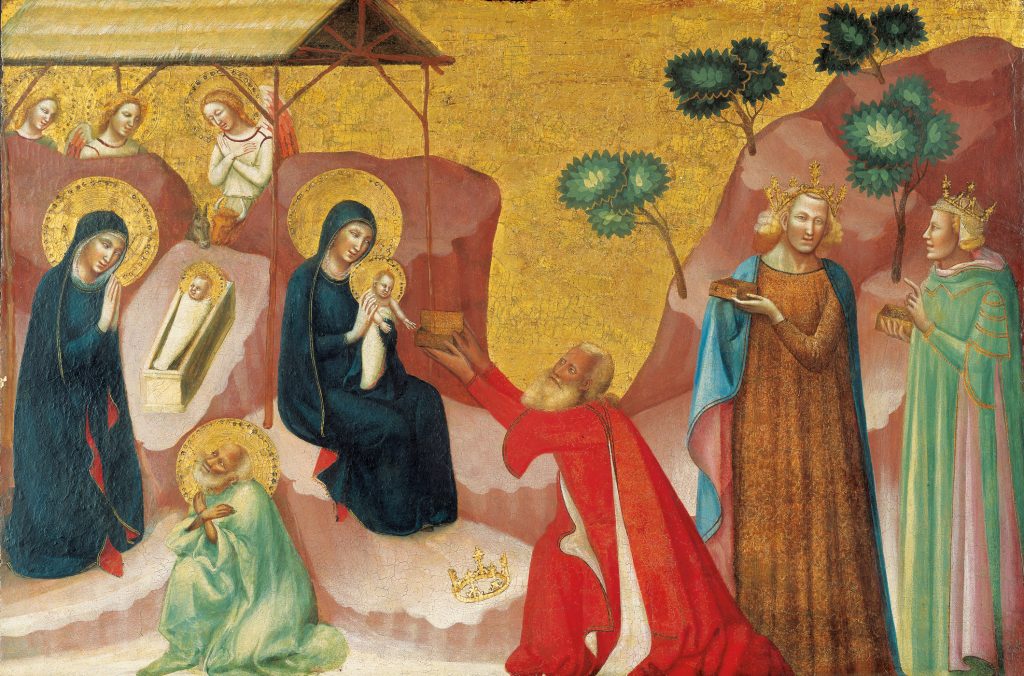The Nativity and the Adoration of the Magi (work of art)
Artwork Info
About
The lively expressions and gestures of Pseudo-Jacopino’s figures and the elaborate, stylized patterns and color combinations found in his compositions reflect the influence of contemporary Bolognese manuscript illumination and Riminese painting. In many of the artist’s works, highly refined elements appear side by side with rather awkward passages. In this painting, the lively demeanor of the figures and the dignified mien of the elegantly attired kings on the right clearly reveal the artist’s abilities. His use of simultaneous narrative, the combination of two distinct episodes in the same work, was a compositional device often employed by Medieval artists. To the left, Mary, Joseph, angels, and the ox and ass reverently worship the newborn Christ Child, who lies in a manger under an open shed while, seated before the same structure, Mary and the infant Jesus receive the gifts of the three kings from the East.
This is one of five paintings in the Museum’s collection by Pseudo-Jacopino, whose works are rarely found outside Italy. The name of this anonymous artist (or perhaps group of artists) is derived from the painter Jacopino di Francesco Bavosi, who was active about 1360–83. While the two artists’ works are similar, the group of paintings now attributed to Pseudo-Jacopino are thought to date from about 1320 to 1350, too early for them to have been painted by Bavosi.
tags: communication, order, part/whole, ritual, artist’s process

